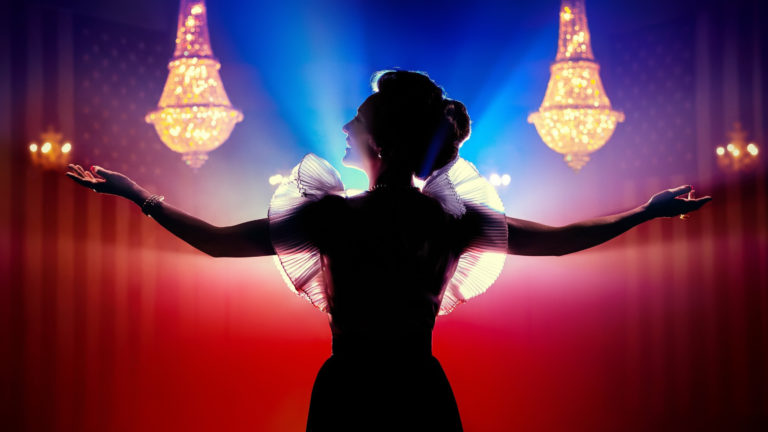The 19th century proverbial saying that “Speech is silver, but silence is golden” may have been in reference to the value of discretion. But when applied to filmmaking, the phrase holds true.
Each aural component added during the post production of a sound film should add something to the final cut. It could be a subtle non-diegetic underscore beneath weighty dialogue, or the diegetic sounds of footsteps approaching, babies crying, or bombs exploding. What is heard in a film is just as important as what is shown. But sometimes it’s the lack of sound that works best for what the filmmaker is trying to convey.
Related to seven films that changed what you hear in film, this article explores the use of silence. Silence extends across various genres as a tool for building anticipation and for illustrating contrast.
Silence as a subversion of what’s expected
There are two types of “silence” in a film: absolute silence, and near (or relative) silence. The latter is much more common and is instead a layered approximation of true silence. Lisa Coulthard describes this as a “constructed and fabricated effect of silence rather than any true entity or quality or even absence.” Since Fritz Lang’s pioneering use of diegetic sound in the 1930s with M (1931), it has been used to fill the gaps of what is expected, even if it is not seen. If someone walks through the forest at night in a horror film, the sounds of nature and the underscore (if they are kept low and/or have been playing throughout) form the near silent foundation of the scene because they read as normal. A twig snap would add to the tension because it breaks the silence and simultaneously signals danger.
In The Shining (1980), Stanley Kubrick takes a more artistic approach to subversion by creating gaps and filling them with a haunting score. Danny Torrance reveals his ability to “shine” while talking to Tony in the bathroom. At that momenet we witness Danny’s vision of the Grady twins and blood spilling from the Overlook Hotel’s elevator. Polish composer Krzysztof Penderecki’s “The Awakening of Jacob” gets louder as all other sound drops out. We don’t hear Danny’s scream or the sound of the unnatural wave crashing against the walls and furniture. This makes the scene more unsettling.
Using silence to direct focus
Removing certain sounds completely (or fading them into the background of a scene) forces the viewer to pay attention. The more important elements stand out because of the contrast. In the Polish drama Ida (2013), the camera sits quietly for a while with a woman in a bathtub. This turns out to be penultimate moment of her life. In a stark contrast, the actual last moment of her life is scored by classical music playing within the scene.
In To Kill a Mockingbird (1962), the gravity of Atticus Finch’s “All Men Are Created Equal” speech in the courtroom comes both from Gregory Peck’s expert delivery, and the fact that he is not competing with a sentimental score for the audience’s attention.
Contrast
Tone often dictates whether or not sound (specifically music) should be added. Inspirational speeches about fighting for freedom (Braveheart) or independence (Independence Day) typically need moving compositions to be effective. The music tells the audience how to feel and which parts of the speech are more important, as volume and intensity typically have a direct correlation to emotion.
Let’s keep with the theme of courtroom speeches as an opposing idea to epic rally cries. Choosing to go silent allows for the seriousness of the situation to be felt through the words, actions, and reactions of those in the more formal setting. The exchange between Tom Cruise and Jack Nicholson in A Few Good Men (1992) begins as calm questioning and escalates into a shouting match, interrupted only by a judge trying and failing to maintain order, and the natural pauses in line delivery. Of course the focusing of the lens plays a role, but the silence here is what allows the rest of the courtroom to disappear, as the audience waits for one man to break.
Silence as an entity
For filmmakers like Ingmar Bergman, Andrei Tarkovsky, Jean-Luc Godard, silence and sound often become characters in the narrative. They serve simultaneously as sonic elements and represent the metaphysical and existential. Silence is menacing and it is comforting. Silence is God and silence is nothing. The gist is that silence can be a subjective and more flexible way to address a larger theme or idea.
Silence as reality or hyperreality
Practically speaking, sometimes silence just lets the audience experience what the characters are feeling. The disorientation of an explosion is often conveyed by a ringing sound and relative silence (Tom Hanks in Saving Private Ryan). Here, the contrast is to what the soundscape was before the event, and what the audience assumes it will be after a finite period. Outer space is often silent (2001: A Space Odyssey, Contact, etc.) because that’s what science tells us space is. The astronauts hear nothing, so neither should we.
Emotional reality
Similar choices connect audiences with the experiences of characters with physical disabilities. In the recent Mike Flanagan-directed horror film Hush (2016), the protagonist is a deaf and mute writer. She has secluded herself in a cabin in the woods when a masked man with a knife begins tormenting her. “Sound is crucial to the genre in general, but never more so for me than with this movie,” Flanagan told Bloody Disgusting. The director revealed details about how he and his team went about telling the original story through silence:
“It’s an incredibly complicated sound design. During production, the camera was almost always steadicam, which means that during takes you’d hear footsteps of the whole crew moving with Kate. You’d also hear me shouting out cues the whole time, because that was the only way to choreograph Kate, John, and the camera during takes. So all of our “ambient” sound had to be built again in post production.
Then, our ‘silence’ also had to be built… you can’t actually just ‘pull sound out’ of a movie like this, even though that’s how I’ve heard it described. When we’re in Maddie’s perspective, we’re actually hearing a lot of complicated sounds that give us the IMPRESSION of silence. Otherwise, people wouldn’t actually be hearing silence… if we really pulled the sound out, they’d be hearing popcorn being munched, or phones vibrating, or their own shuffling in their seats. Or their house settling. We needed a soundscape that would cover all of those noises, but make you feel like “all the sound went away.”
Sensory experience
The film Don’t Breathe (2016) does something similar, in that it brings the audience into a quiet world ruled by a blind man. There are scenes in the dark that are clear homages to the basement scene in Silence of the Lambs (1991). The audience’s POV is via night-vision and all the protagonists have to navigate the space are sounds that contrast the silence of the dark.
In Band of Outsiders (Bande à part) (1964), Godard brings the audience into a silent scene in a way that is meant to be jarring and playful. While sitting in a café, three characters agree to have a “minute of silence.” The woman in the scene counts backwards from three. Just as the trio goes silent, all ambient sound in the venue goes away. The viewer experiences absolute silence in real-time. The silence does not last a full minute, but only because one of its players interrupts the game.
Using silence for comedic effect
To end on a lighter note, we take a look at the relationship between silence and comedy. For comedians like Charlie Chaplin (who rarely broke silence in film), physical comedy was the only means of inspiring laughter, which paved the way for comedians of later generations to become hybrid entertainers.
This inevitably brings us back to the work of Stanley Kubrick. In his only comedic film, Dr. Strangelove, or: How I Learned to Stop Worrying and Love the Bomb (1964), the jokes depend on silence in a way that could not be written. George C. Scott would be the unsung comedic hero of the film, were it not for the various roles of one Peter Sellers. Kubrick allowed Peter Sellers to ad-lib much of his dialogue and amended the script as they went along. Maybe the most iconic moment of the film is the final scene, where a silent War Room gives Sellers the stage to give a masterclass on verbal and physical comedy.
Another comedian who masters the art of working with and around silence to make jokes funnier was the late Gene Wilder. The supercut below, presented by Raging Cinema, shows how Wilder used the comedic pause in just about every role he ever had.




